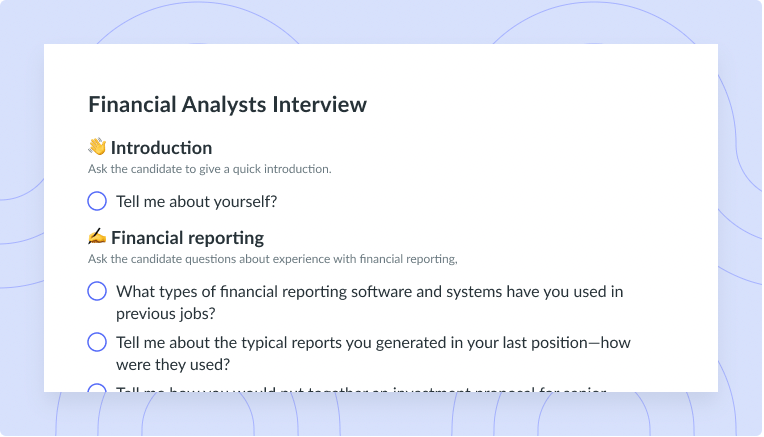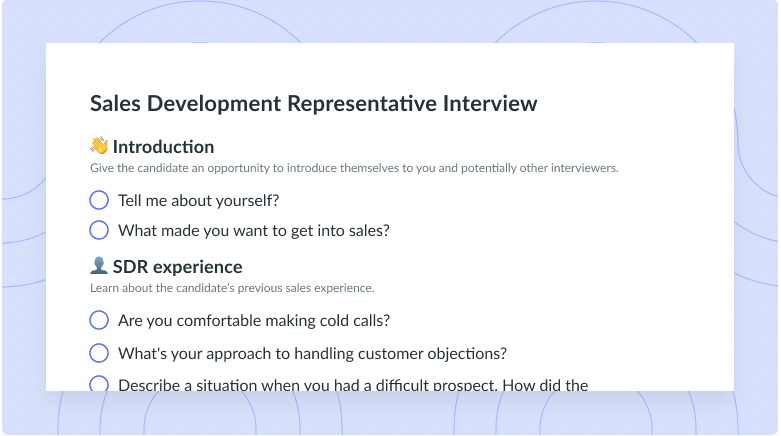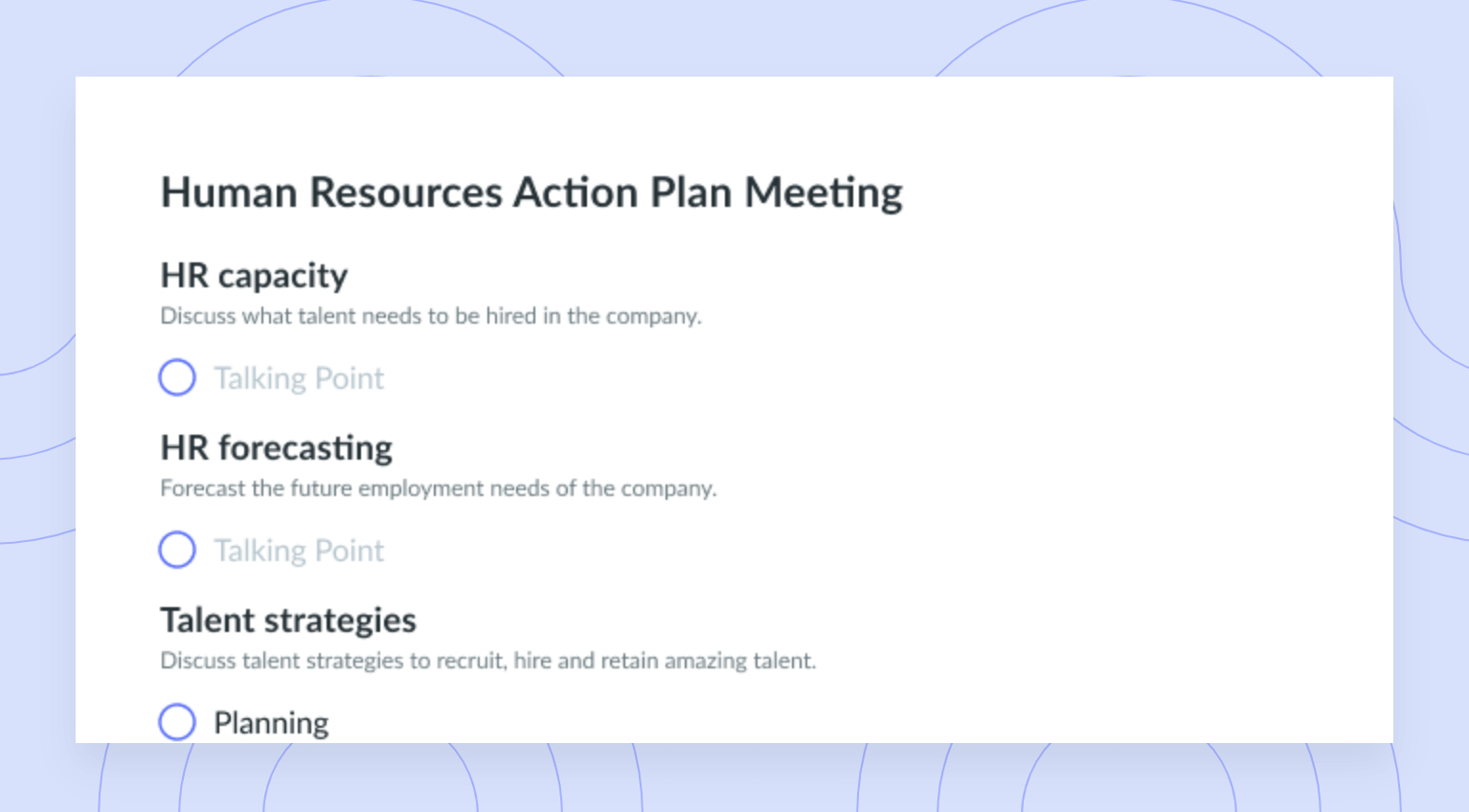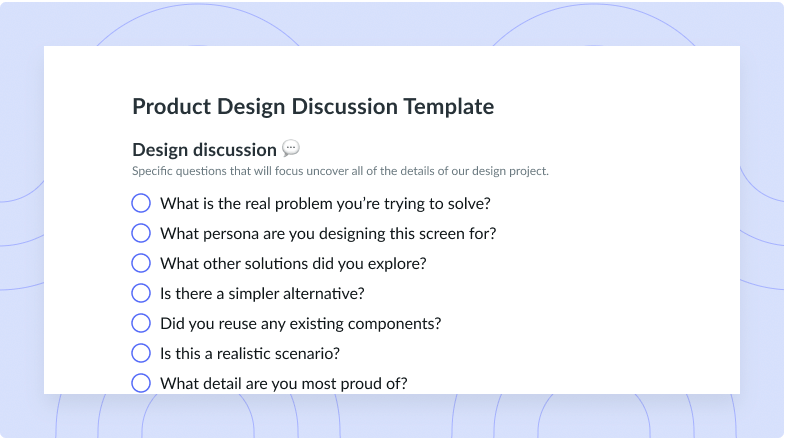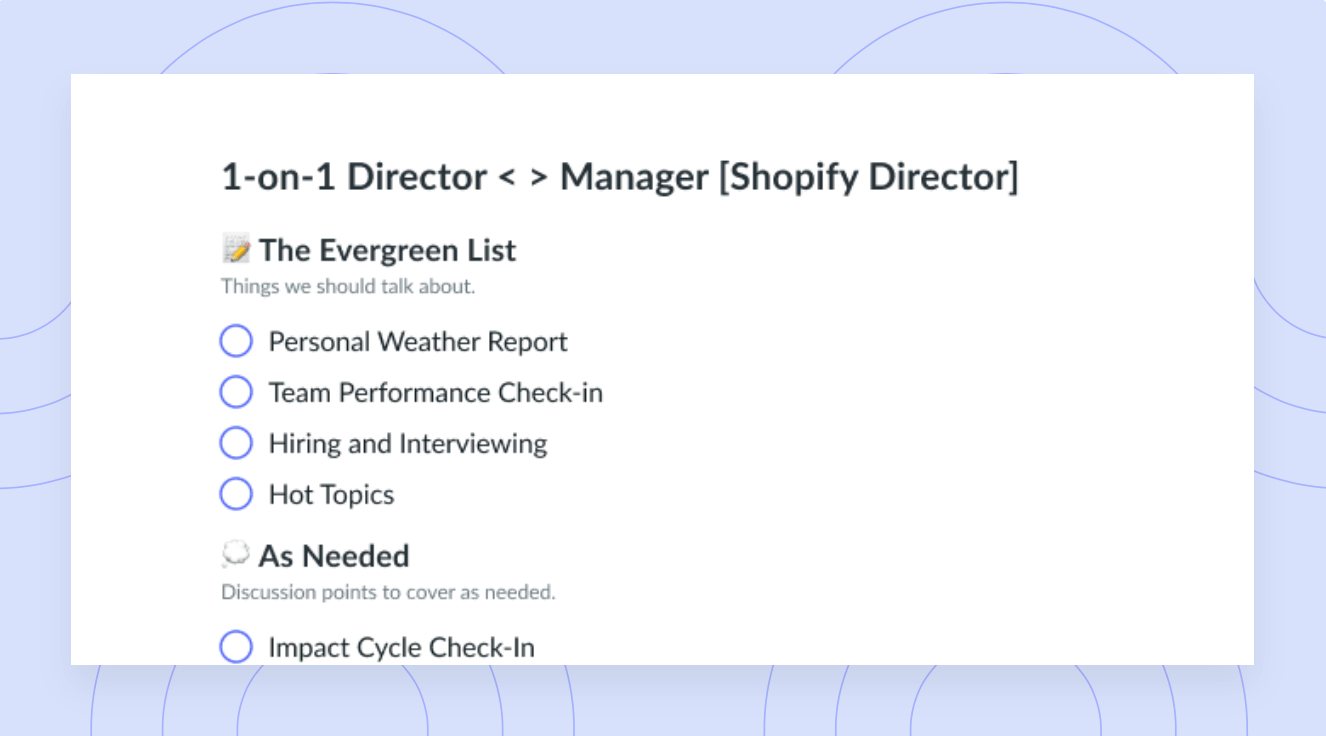How to Write an Interview Transcript [+Examples]
Learn how to create and use an interview transcript to improve human resources and team leadership responsibilities!
There are a few types of documentation that are really important in an organization. Policies, meeting notes, project plans, and budgets are among some of the most well-known. But a lesser-talked-about and equally important type of documentation is an interview transcript! Read on to learn how to create and use an interview transcript to improve your internal tracking and efficiency when handling leadership and human resources (HR) responsibilities!
- What is an interview transcript?
- Why should you create an interview transcript?
- How to write an interview transcript
- Examples of interviews to transcribe
- How to save time with automatic transcription
What is an interview transcript?
An interview transcript is a written document that outlines the conversation had during a conversation, particularly during an interview. Because of this use case, it is a confidential document that is only shared with authorized parties in the organization and rarely shared externally. Many people write interview transcripts manually, but it can take several hours to record the interview conversation in detail.
Why should you create an interview transcript?
- Creates a record of interviews
- Allows you to give your full attention
- Saves time in the future
- Enables others to give their input on the interview
- Lets you look back on old interviews
Creates a record of interviews
Interview transcripts are commonly used by HR professionals and managers in an organization to build a record of conversations with future or current employees. In hiring processes, recruiters need to ensure the accuracy of information provided by the future employee. Managers of existing employees will also need to record conversations during performance reviews to assist with future decision-making in the organization.

Keep an accurate record of discussions and decisions with AI meeting summaries
Fellow’s AI meeting summaries provide all the key takeaways from your meetings in minutes so you can revisit discussions and align around next steps.
Allows you to give your full attention
If you aren’t required to take notes in the meeting, you can spend more time focused on the conversation at hand. This will allow the employee with whom you’re speaking to feel more at ease and more appreciated as well. If you’re having a difficult conversation with an employee, this will be especially important to them!
Saves time in the future
It’s common practice for a hiring process or performance review to involve multiple follow-up conversations over time. If managers are equipped with the transcripts from past conversations, they might find answers to questions they were planning to ask. By avoiding asking duplicate questions, managers can ensure more time during the meeting is spent on new topics!
Enables others to give their input on the interview
Limiting the amount of people on each call is important as it helps the conversation stay on topic and on time. A great way to give other people access to the discussion points post-call is to share the meeting transcript with them. Since it’s a written document, others can comment on or add notes directly to the document for easy collaboration.
Lets you look back on old interviews
Most companies have a policy on keeping this type of documentation for up to several years after the call, which can help with referencing past details later on.
“It’s impossible to remember every important detail discussed in a meeting. This is where meeting transcription can help. You can keep the audio/video meeting transcription as a record for future reference and use it for further analysis and discussion after the meeting.”
– Beth Worthy, Forbes Councils Member
How to write an interview transcript
- Record the interview
- Listen to the recording carefully
- Follow a template
- Create a draft
- Proofread and edit the transcript
1Record the interview
To be able to transcribe anything, you need to conduct the actual interview first. The interview should be recorded and the audio will need to be clear enough that you will be able to hear what is being said by each participant. Ideally, you’ll also have an easy way to identify who is talking at each point, so meeting participants should include their names on their profiles as soon as they join the call.
Remember, anytime that you are recording a meeting, you’ll need to notify and get permission from all parties on the call to be courteous of privacy concerns.
2Listen to the recording carefully
After the call, carefully play back the recording and type out the conversation as you hear it. It’s important to make notes of any conversations that are unclear. To avoid incorrectly documenting someone’s conversation, reach out to the participants and clarify what they were saying as needed. It’s also a best practice not to generalize what someone is saying or add notes about the tone in which the participant is speaking—these would be interpretations of the conversation that may not be accurate. To provide a super clear and factual transcript, try your best to record the conversation exactly as it is.
3Follow a template
See if your HR or leadership team already uses a template for interview transcription processes. If they do, make sure to use it according to any company policies that are in place. If they don’t, try leveraging one of Fellow’s many meeting templates. Following a meeting template gives some structure to your transcription document, making it easy for others to review the text and find the specific discussion around each meeting topic later.

4Create a draft
The entire transcription should be uploaded into one document such as a Google Doc or Microsoft Word file. Depending on how long the interview was, your draft will likely be a few pages or longer. Putting it together will take a few hours. While you’re working on this, since it’s an activity that requires a lot of focus on details, consider blocking out your calendar to avoid distractions!
5Proofread and edit the transcript
Before submitting the transcript with the rest of your team and the employees in the meeting, do a proofread and edit. Google Docs and Microsoft Word both offer in-app grammar, spelling, and punctuation checks that you should leverage. A helpful trick to make sure the documented conversation flows well is to read it out loud to yourself. You’re more likely to catch run-on sentences this way! You’ll also want to do a final run-through of the recorded interview to make sure you haven’t missed anything. Finally, upload the transcript to a location where other authorized participants can review the documentation and add comments as needed.
Examples of interviews to transcribe
User experience interview
A user experience (UX) interview measures how well a potential customer would be able to navigate your product. For example, you could ask about how easy it is to find certain information or read a given block of text. This type of interview gives a lot of specific details that product designers or marketers can use to improve customer-facing assets. Recording and transcribing this interview type is important to remember all of those details. Those transcriptions can then be stored as reference points for future UX design projects as well!
Hiring interview
Hiring interviews might be one of the most common case scenarios to employ transcription. Most hiring processes involve multiple interviews or stakeholders. Sometimes, managers and recruiters aren’t able to sit in on the same meetings together. Transcription then allows all parties of the hiring team to have access to the same information about the candidate and also ensures they aren’t asking duplicate questions to the same candidate during separate interviews.
Employee interview
An employee interview can occur for many reasons—such as for a performance review that is done throughout the year, a feedback review call, a career development planning meeting, or any other type of interview that is held between an employee and their leader.
Employee performance and well-being should be monitored by the organization to prevent burnout and ensure growth goals are met. Transcribing these interviews maintains accountability for both managers and their employees!
Exit interviews
Recording exit interviews can have a lot of benefits for an organization, particularly if employee turnover is increasing. Employees who are leaving the company have valuable insights to offer such as what made them leave, where they might have missed support opportunities, or how they felt about the overall company culture. This is an important type of interview for higher-level management and HR teams to review and find opportunities for improvement.
How to save time with automatic transcription
Manual transcription takes hours, and with enough meetings, transcription could even be a full-time job in itself. A great way to lower costs and improve productivity is to invest in an automatic transcription tool like Fellow!
Fellow is a meeting management software that will help you prepare for meetings, flow through talking points, and track action items. At the same time, an AI assistant built into Fellow can automatically build transcriptions, meeting notes, and summaries! This means that meeting hosts can focus on the conversation at hand and share meeting updates with necessary parties without having to do hours of additional transcription work.

Stay present with AI meeting transcription
Fellow’s AI meeting assistant captures discussions in Google Meet, Microsoft Teams, and Zoom so attendees can focus on the discussions and then review and share important insights, decisions, and actions after the meeting has ended.
Parting advice
Anyone who is overseeing the success of a team or product needs to manage a lot of detail—and this likely includes having a lot of meetings, too. As your schedule fills up, automatic transcription can help you quickly process and store detailed insights from your meetings so you can easily access them down the line. Not only does it help with building a strong internal knowledge base for your company, but it also allows you to spend more time engaged in every call and working on tasks that lead to higher growth!

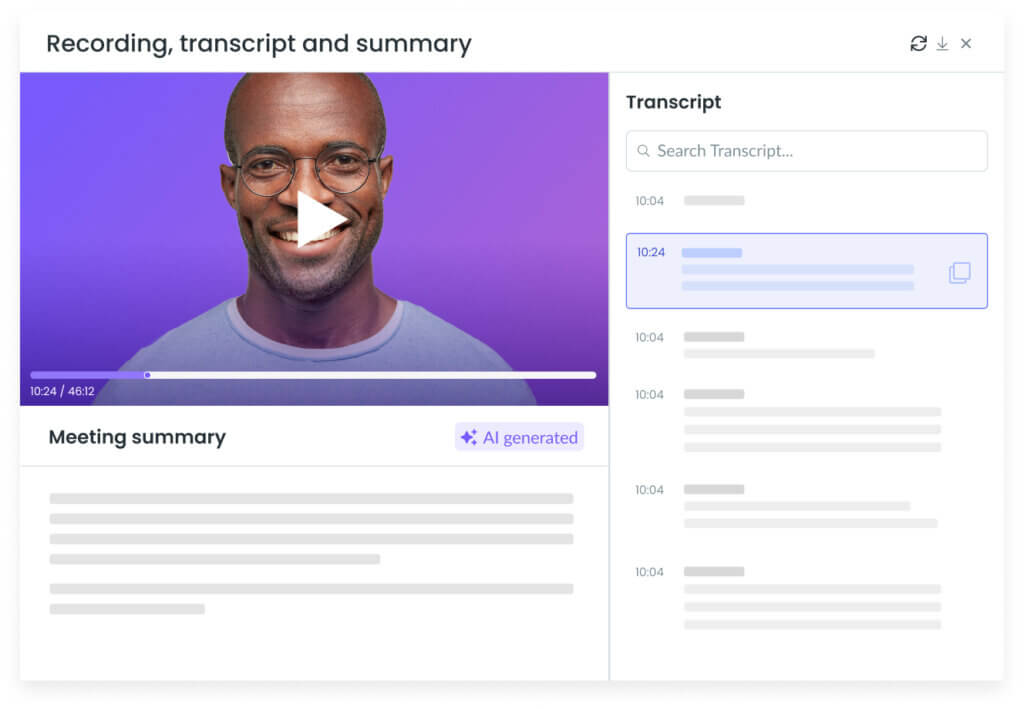
![How to Have an Effective Reverse Interview [+Examples]](https://fellow.app/wp-content/uploads/2022/07/reverse-interview.jpg)

![A Guide to Taking Good Interview Notes [+Free Templates]](https://fellow.app/wp-content/uploads/2023/09/interview-notes.jpg)


![How to Write a Thank You Email After a Meeting [+Template]](https://fellow.app/wp-content/uploads/2023/12/thank-you-for-the-meeting-email-2.jpg)



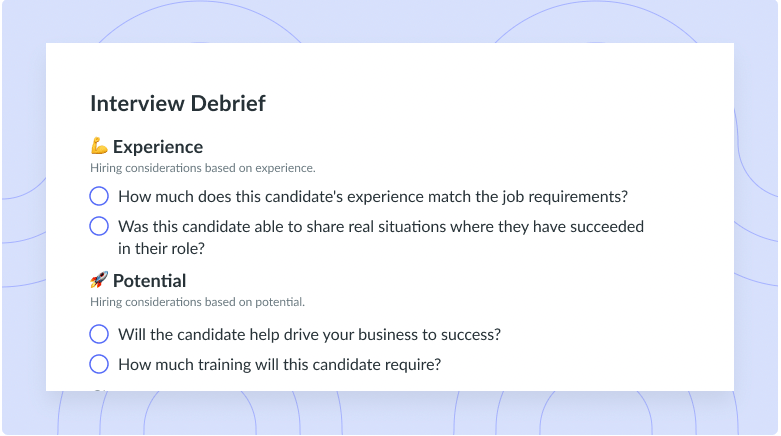
![Incoming Client Interview [Legal Clinic] Template](https://fellow.app/wp-content/uploads/2021/09/Incoming-Client-Interview-Legal-Clinic-preview.png)
